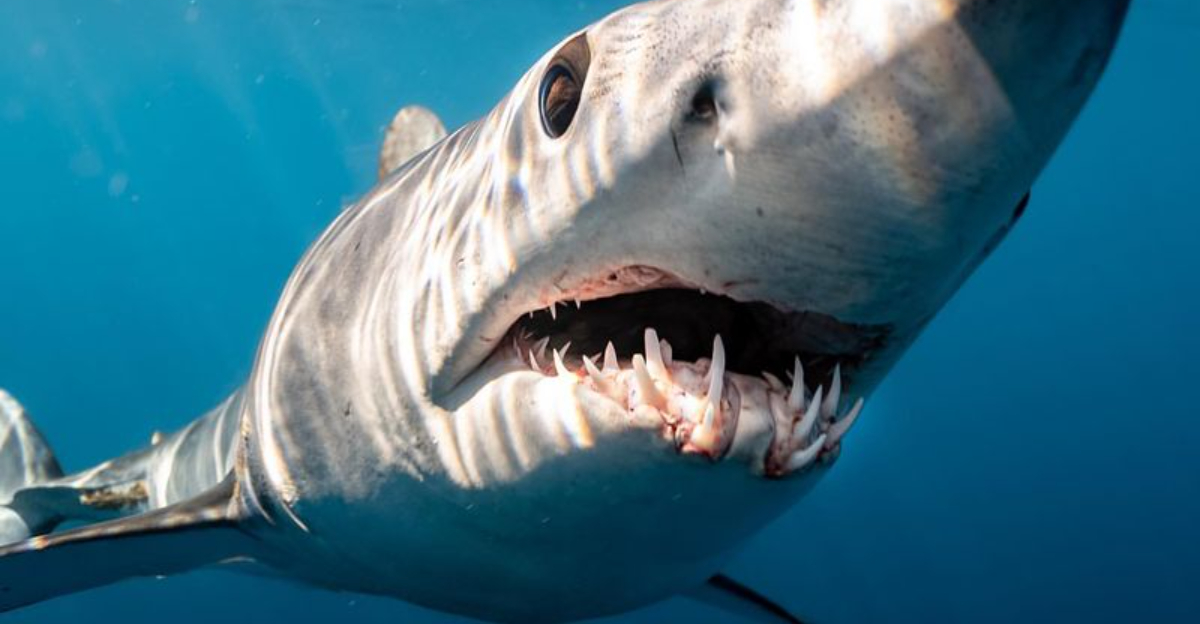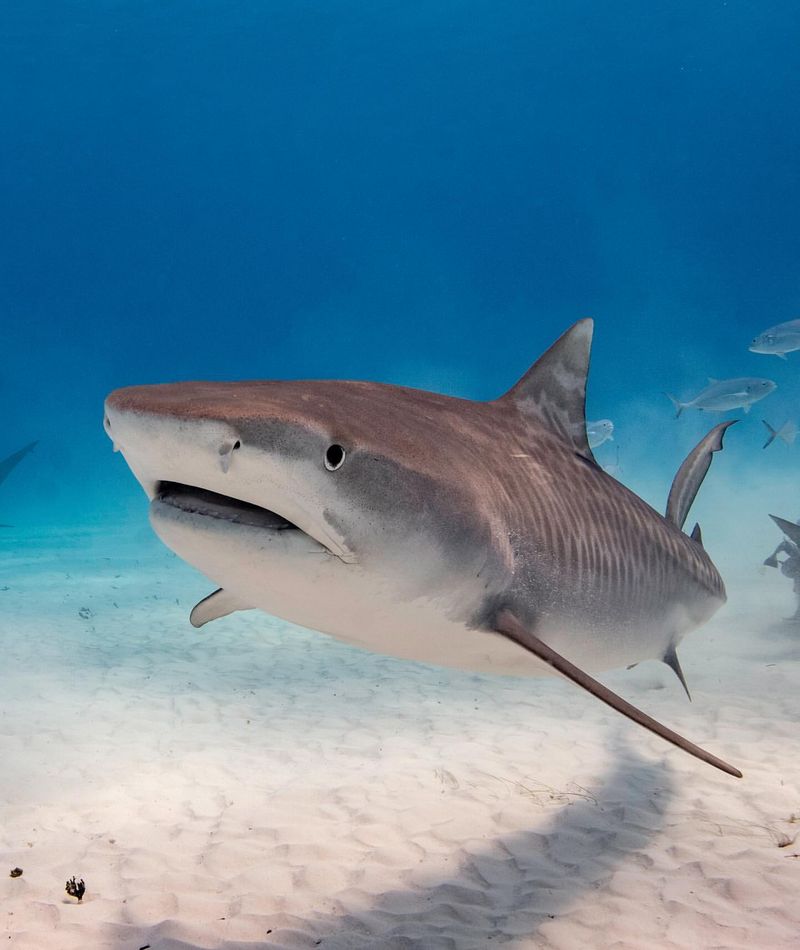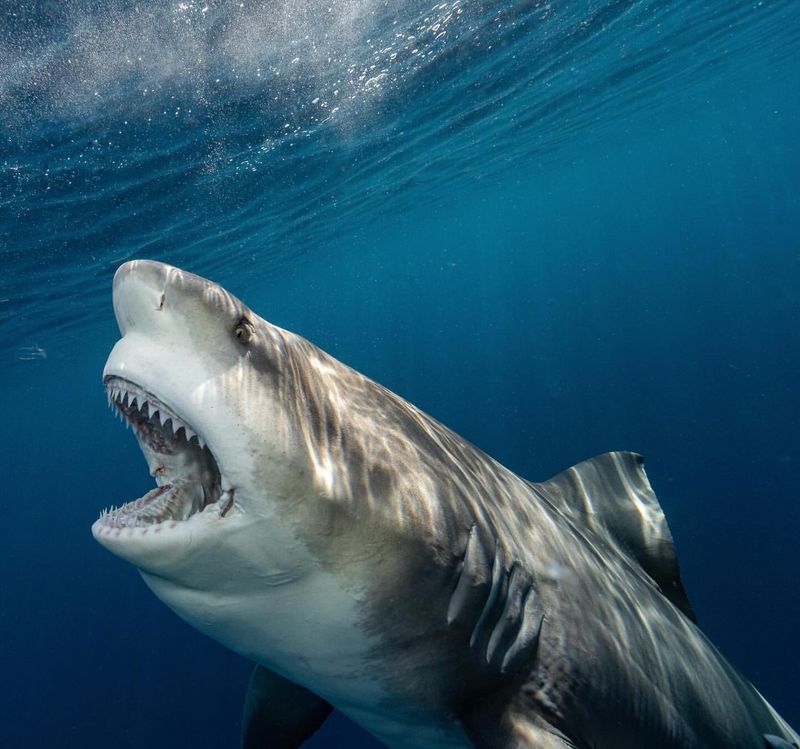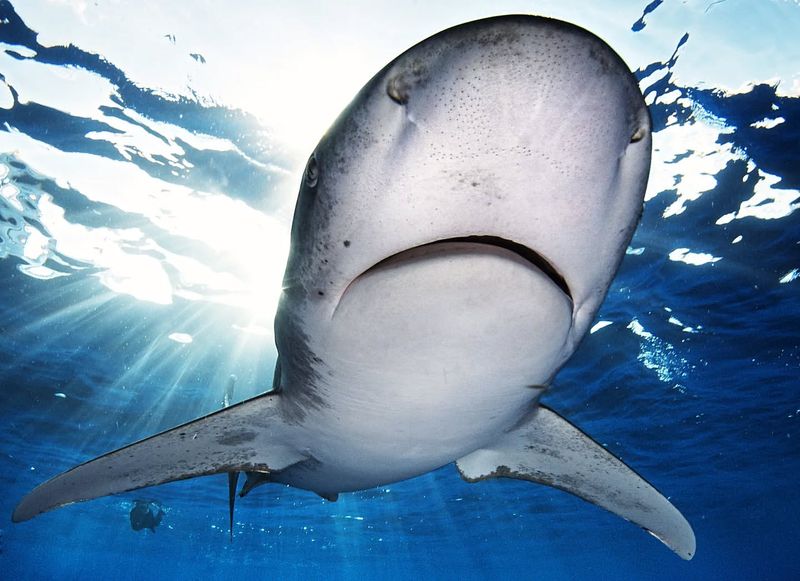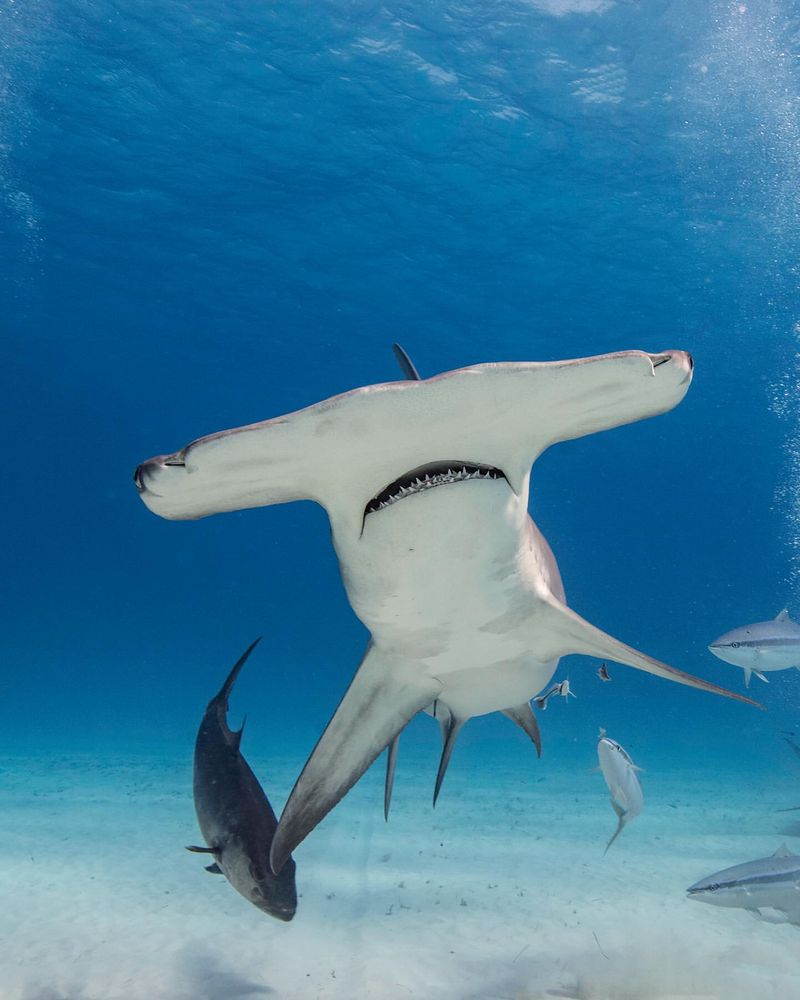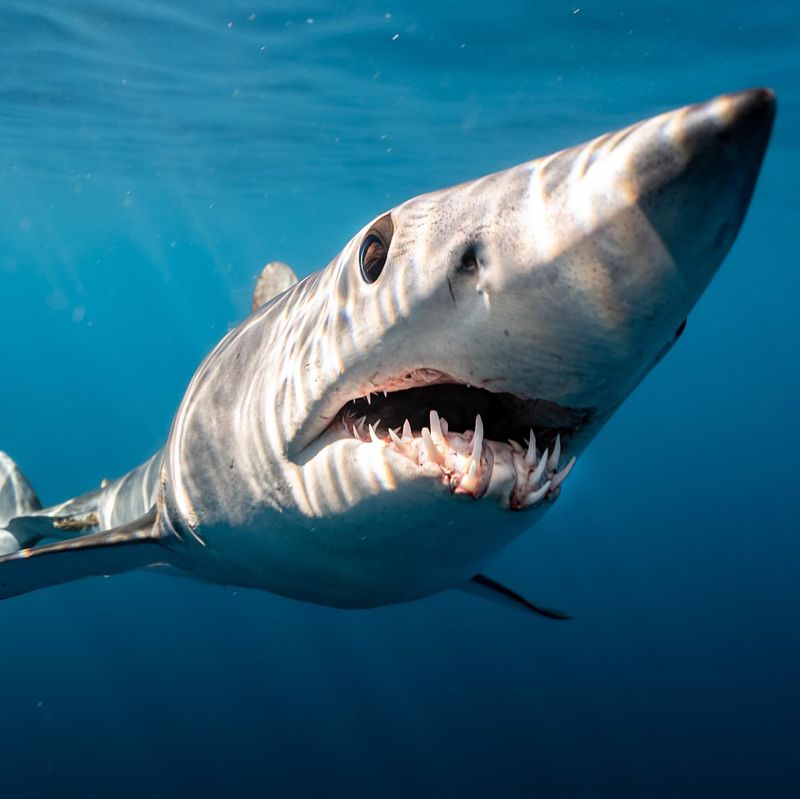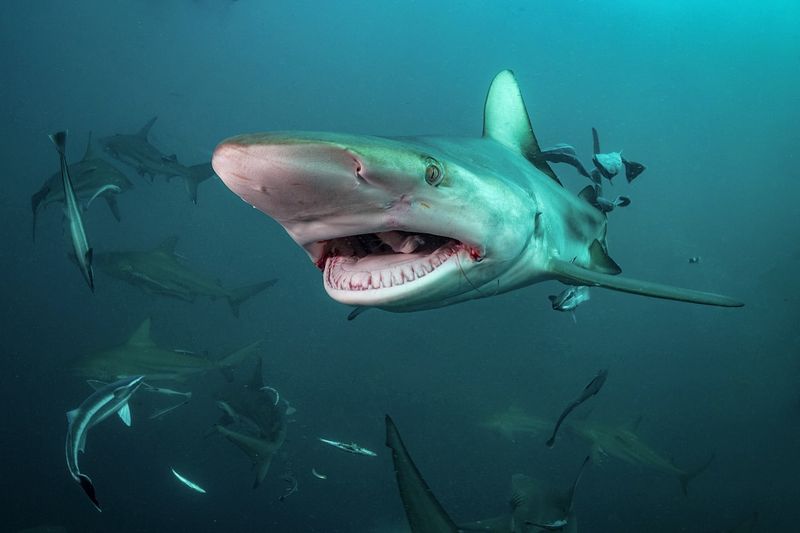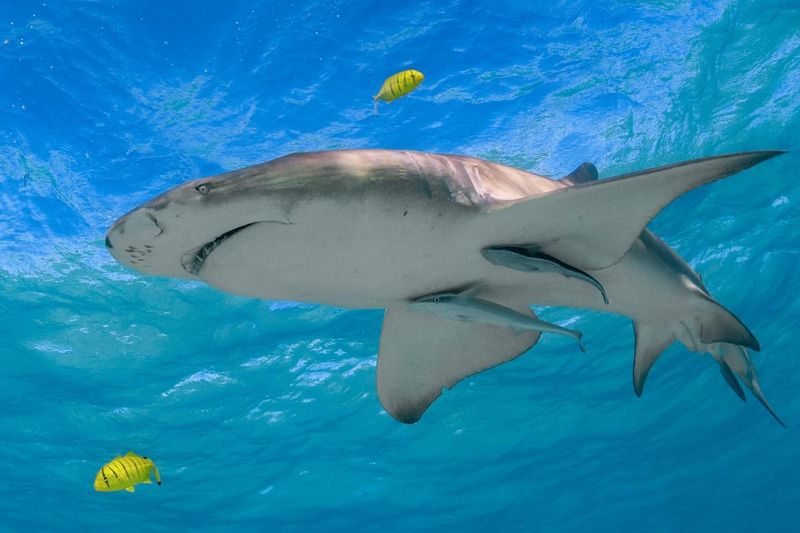📖 Table of Content:
The deep sea is a realm where only the most formidable predators survive, and sharks reign supreme as some of the ocean’s deadliest hunters. With their exceptional speed, strength, and finely tuned hunting instincts, they have evolved to become unmatched apex predators. Among them, a select few stand out for their extreme aggression and relentless pursuit of prey in the depths of the ocean.
These sharks are known not only for their physical prowess but also for their ability to dominate vast underwater territories. Whether they stalk the dark, cold waters or cruise through coastal zones, they strike fear into the hearts of other sea creatures. Each species on this list brings its own unique set of traits, making it a master of aggression and survival in an environment where danger is ever-present.
From the terrifying Great White to the elusive but deadly Oceanic Whitetip, these sharks have earned their place at the top of the food chain. Their aggressive nature makes them some of the most efficient and dangerous predators in the world’s oceans. Let’s take a closer look at these apex hunters and what makes them so fiercely effective in the deep sea.
1. Great White Shark
The Great White shark is perhaps the most famous of all shark species, known for its size and predatory prowess. Found in coastal waters worldwide, these sharks can grow up to 20 feet in length and weigh over 5,000 pounds. Their diet primarily consists of seals, sea lions, and carrion. The Great White’s keen sense of smell and acute hearing make it a highly effective hunter.
Despite their fearsome reputation, attacks on humans are rare and often due to mistaken identity. Their role in marine ecosystems as apex predators is crucial for maintaining the balance of the ocean’s food chain.
2. Tiger Shark
Notorious for their indiscriminate feeding habits, Tiger sharks have earned the nickname “garbage cans of the sea.” Their diet is incredibly varied, ranging from fish and seals to birds and even man-made objects. This adaptability makes them one of the most opportunistic predators in the ocean.
Distinctive stripes on their bodies give them their name, and these patterns fade as they mature. These sharks inhabit tropical and temperate oceans and are often found near coastlines. Tiger sharks are solitary hunters, with powerful jaws and serrated teeth capable of slicing through bone. Their opportunistic feeding behavior makes them one of the most dangerous sharks to encounter.
3. Bull Shark
Highly adaptable and aggressive, Bull sharks thrive in both saltwater and freshwater environments. This ability allows them to travel far up rivers, expanding their range of prey. With their stocky build and blunt snout, they are one of the most intimidating and powerful shark species.
They have a reputation for being unpredictable and are responsible for many near-shore attacks on humans. Their preference for shallow waters often brings them into contact with people, but it is their territorial nature that makes them particularly dangerous.
4. Oceanic Whitetip Shark
A master of the open sea, the Oceanic Whitetip shark is easily recognized by its long pectoral fins and distinctive white tips. Preferring deep, warm ocean waters, they are often solitary creatures but can display curiosity around boats or shipwrecks. Their elusive nature and striking appearance make them a fascinating yet dangerous presence in the deep.
Unlike other sharks, the Oceanic Whitetip is known to approach swimmers and divers out of curiosity, which can be unnerving. Their slow yet methodical swimming style belies their aggressive nature when hunting. Oceanic Whitetips have been implicated in attacks on survivors of shipwrecks and downed aircraft, highlighting their opportunistic feeding behavior.
5. Hammerhead Shark
Easily recognizable by their distinctive head shape, Hammerhead sharks have enhanced sensory perception that aids in hunting. The wide placement of their eyes and nostrils allows them to detect prey like stingrays, fish, and crustaceans with greater precision. Common in warm, tropical waters, they often form large schools during the day, making them a striking sight in the ocean.
Despite their unique appearance, they are efficient hunters and can be aggressive when threatened. Although generally not a threat to humans, their remarkable agility and strength make them formidable predators in the ocean. Their specialized hunting skills play a vital role in maintaining the health of marine ecosystems.
6. Mako Shark
Mako sharks are the fastest swimmers among sharks, reaching up to 45 miles per hour. This incredible speed makes them agile hunters, capable of catching swift prey such as tuna and swordfish. Makos are found in both temperate and tropical oceans and are known for their acrobatics, often leaping out of the water.
Their streamlined bodies and conical snouts contribute to their impressive speed and agility. While generally not aggressive towards humans, their speed and power make them dangerous if provoked. Sport fishers prize Mako sharks, but their populations are declining due to overfishing.
7. Blacktip Shark
Named for the distinctive black tips on their fins, Blacktip sharks are easily recognizable. Found primarily in coastal waters, they thrive in warmer climates. Their energetic hunting style includes leaping out of the water while chasing prey, making them a thrilling sight to see.
Blacktips feed on small fish and invertebrates, and their presence in shallow waters sometimes leads to interactions with humans. While generally shy and avoiding conflict, they can become aggressive if cornered. Their dynamic hunting techniques and agile movements contribute to their reputation as skilled predators in their natural habitat.
8. Lemon Shark
Named for their yellow-brown coloring, Lemon sharks blend seamlessly with sandy seafloors, providing effective camouflage. They inhabit subtropical waters, often frequenting coral reefs, mangroves, and sandy flats. Known for their social behavior, they frequently form groups for hunting and protection.
Their diet consists mainly of fish and crustaceans, and they use electroreceptors in their snouts to detect prey. While not typically aggressive towards humans, their curiosity can sometimes lead to close encounters. Lemon sharks play an essential role in marine ecosystems, helping control fish populations and maintain the health of coral reef environments.
